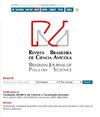LLLT applications may enhance ASD aspects related to disturbances in the gut microbiome, mitochondrial activity, and neural network function
IF 1.1
4区 农林科学
Q3 AGRICULTURE, DAIRY & ANIMAL SCIENCE
引用次数: 0
Abstract
Autism Spectrum Disorder constitutes a complex, elaborate, and diverse condition at a developmental, biological, and neurophysiological level. It is recognized primarily by the behavioral manifestations of the individual in communication, social interaction, and by extension in his cognitive development and adaptation to society as a whole. A wide range of studies have linked the pathophysiology of autism to dysfunctional elements in the development and function of mitochondria, cells, neurons, and the gastrointestinal microbiome. Low Light Laser Therapy (LLLT) is an innovative, emerging, non-invasive treatment method. It utilizes low levels of red light/near-infrared light positively affecting biological and pathological processes of the body by enhancing cellular, mitochondrial stimulation, neurogenesis, synaptogenesis, and immune system development, regulating the gut microbiome's function. The retrospective literature review focuses on the possibility of effective use of the method in autism. According to the literature, LLLT does not have many applications in patients with ASD and is still in the early stages of its use in the disorder. However, the results of the studies highlight its therapeutic effect in several areas related to the disease, pointing out that it is a promising therapeutic approach for the evolution of autism in the future.LLLT应用可能会增强与肠道微生物群紊乱、线粒体活性和神经网络功能相关的ASD方面
自闭症谱系障碍在发育、生物和神经生理水平上构成了一个复杂、复杂和多样的状况。它主要是通过个人在交流、社会互动中的行为表现,以及他的认知发展和对整个社会的适应来认识的。广泛的研究已经将自闭症的病理生理与线粒体、细胞、神经元和胃肠道微生物群的发育和功能失调联系起来。低光激光治疗(LLLT)是一种创新的、新兴的、无创的治疗方法。它利用低水平的红光/近红外光,通过增强细胞、线粒体刺激、神经发生、突触发生和免疫系统发育,调节肠道微生物群的功能,积极影响身体的生物和病理过程。回顾性文献综述侧重于该方法在自闭症中有效应用的可能性。根据文献,LLLT在ASD患者中的应用并不多,其在该疾病中的应用仍处于早期阶段。然而,研究结果强调了它在与该疾病相关的几个领域的治疗效果,指出它是未来自闭症进化的一种有希望的治疗方法。
本文章由计算机程序翻译,如有差异,请以英文原文为准。
求助全文
约1分钟内获得全文
求助全文
来源期刊

Brazilian Journal of Poultry Science
农林科学-奶制品与动物科学
CiteScore
1.80
自引率
9.10%
发文量
60
审稿时长
>12 weeks
期刊介绍:
A Revista Brasileira de Ciência Avícola surgiu em 1999 a partir da necessidade que a comunidade científica possuía de um periódico para veiculação e publicação de seus trabalhos, com a publicação de três números anuais.
A Revista conta hoje com um corpo editorial altamente qualificado e com artigos científicos desenvolvidos pelos maiores especialistas da área, o que a cada dia atrai mais leitores em busca de inovação e respaldo técnico.
Devido à credibilidade que conquistou pelos esforços de sus autores, relatores e revisores, a Revista ganhou caráter de coleção, sendo consultada como fonte segura de estudo desenvolvidos na Avicultura.
A partir de 2003 – volume 5 -, a Revista passou a chamar-se Brazilian Journal of Poultry Science, e todos os trabalhos passaram a ser publicados em inglês. No mesmo ano subiu para quatro o número de revistas por volume, ampliando-se assim os trabalhos publicados anualmente.
 求助内容:
求助内容: 应助结果提醒方式:
应助结果提醒方式:


